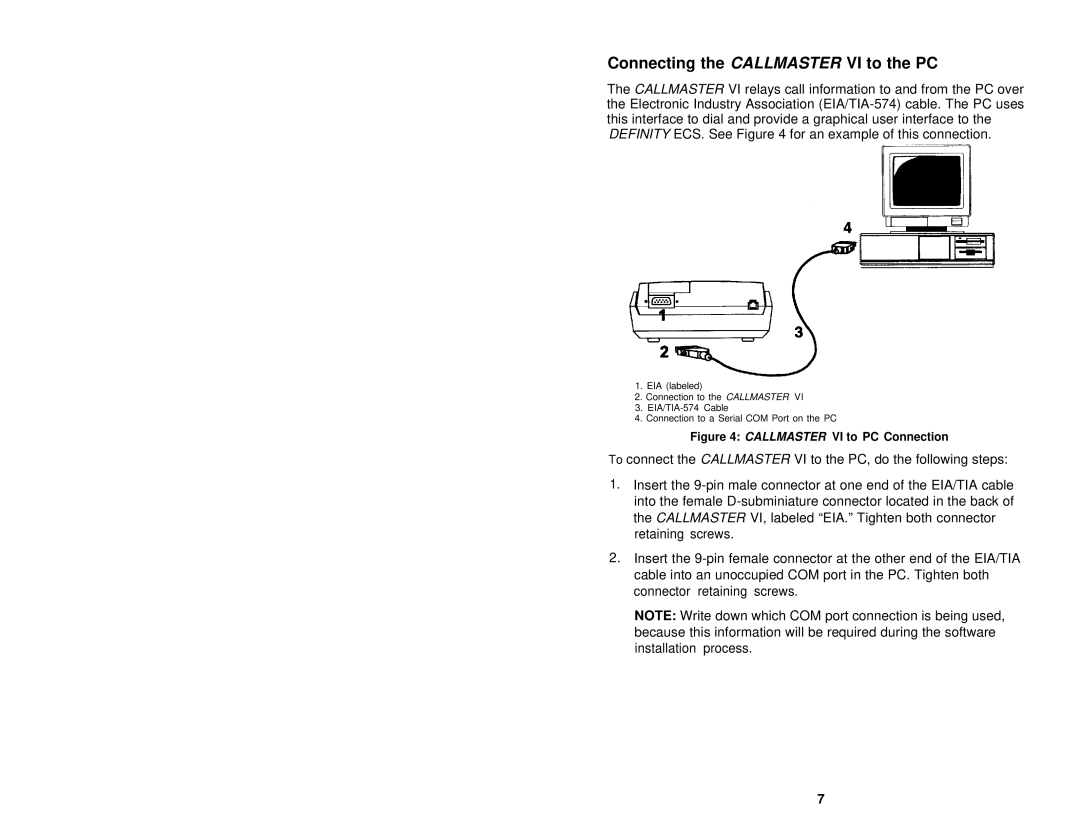
Connecting the CALLMASTER VI to the PC
The CALLMASTER VI relays call information to and from the PC over the Electronic Industry Association
1.EIA (labeled)
2.Connection to the CALLMASTER VI
3.
4.Connection to a Serial COM Port on the PC
Figure 4: CALLMASTER VI to PC Connection
To connect the CALLMASTER VI to the PC, do the following steps:
1.Insert the
2.Insert the
NOTE: Write down which COM port connection is being used, because this information will be required during the software installation process.
7
